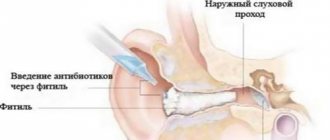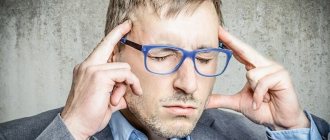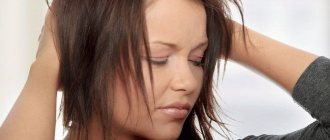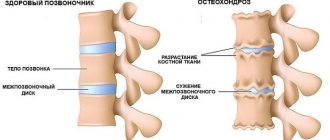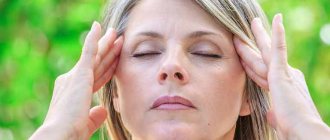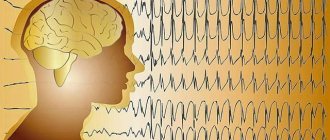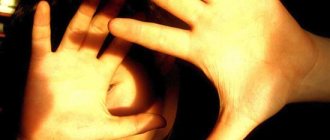Today, medical scientists have identified more than 600 causes of headaches. They are so accustomed to it that most of the population accepts it as a common occurrence. Depending on the cause, the pain can attack different parts of the head, but most often it is localized in the back of the head. The pain can spread to the entire back of the head, but there are often cases when one side hurts more - the left or the right. Let's try to figure out why patients suffer from pain in the back of the head.
There are many causes of pain in the back of the head
Principles of classification
In terms of the scale of discomfort and negative sensations, the first place among all cephalgia falls on headaches in the back of the head on the right or left.
This type of pain syndrome differs from a similar symptom that worries the neck. The first sign occurs after a slight tilt or turn of the head.
Doctors distinguish the following types of occipital pain on the left:
- acute - the reasons why this type of syndrome appears - depression, strong negative emotions, sudden disorder;
- dull – cause significant inconvenience to the patient. Touching increases the pain at its location. Similar signs are observed in patients with arthritis and osteochondrosis;
- aching - the reasons why such a sign appears - spasm of the shoulders and neck. Often, aching headaches on the left side of the back of the head are associated with prolonged intellectual stress;
- pulsating - the reasons why this syndrome appears are associated with high blood pressure. Most often the back of the head hurts in the morning. At the same time, tinnitus bothers me and spots appear in my eyes.
Osteochondrosis of the cervical spine
This is another common cause of headache on the left side of the head. In certain cases, this condition occurs as a result of a failure of the blood circulation process in the tissues, which occurs against the background of spasm in the blood vessels. The reason for this lies in changes in the structure of the cartilage of the intervertebral discs, as well as a decrease in the functionality of the canal in which the vessels and nerves themselves are located.
Currently, this disease regularly occurs in young people leading a sedentary lifestyle. They constantly experience severe pain in the back of the head on the left. Also at risk are patients with injuries and curvature of the spine, obesity, after excessive emotional and physical stress, and with disruptions in metabolic processes.
With osteochondrosis, the patient suffers from dull or shooting pains in the back of the head on the left, which can radiate to the shoulder or arm. Also possible are surges in blood pressure, muscle weakness and decreased sensitivity, stiffness of movement, poor coordination, double vision, hearing impairment, and in some cases, cervical migraine.
This pathology can be counteracted with the help of muscle relaxants, non-steroidal anti-inflammatory drugs, vitamins, and chondroprotectors. Physiotherapy, exercise therapy, and massage also have an effect.
Spine pathologies
The causes of pain in the back of the head on the left are various diseases in the spine. More often, cephalalgia develops as a reaction of the body to sharp pain in the cervical region.
Against the background of muscle tension, the nerve receptors of the head are irritated. Symptoms extend to the left and right sides of the back of the head.
Due to problems with the spinal column, the arteries are compressed, which provokes pain in the left side of the back of the head. Other causes of pain in this area:
- spondylosis;
- myogelosis;
- myositis.
Headaches occur with all of the above pathologies. The intensity of symptoms depends on the degree of disc damage.
With such disorders, there is preliminary pain in the cervical region. Gradually, the pain syndrome spreads to the back of the head. Sometimes it covers the entire head.
Cephalgia can be permanent or paroxysmal in nature, aggravated by sudden movements of the neck and head. Often the clinic in question provokes various disorders in the vestibular apparatus.
Such problems disrupt the functioning of the auditory and visual organs. The patient not only has a headache, but also dizziness and nausea.
Constant pain in the back of the head on the left side can occur against the background of pathologies of the cervical spine. To eliminate such causes, it is recommended to undergo a comprehensive examination.
Pathologies that provoke pain are accompanied by impaired oxygen supply to the brain. In advanced cases, irreversible consequences develop.
If the reasons why the left side of the back of the head hurts are established, the patient is prescribed appropriate treatment. The complex also includes relief of the syndrome.
The difficulty of therapy is the lack of results from taking painkillers. Modern medicine suggests treating patients with a combination of antispasmodics + painkillers.
If your head hurts sharply, it is recommended to take a horizontal position. Using this technique, muscles relax, spasms are reduced, and pain gradually subsides.
Treatment of throbbing pain in the back of the head
- Painkillers and anti-inflammatory tablets - to relieve inflammation and pain. Muscle relaxants - to relax the muscles of the cervical and occipital regions. Vasoconstrictor or vasodilator drugs to restore the tone and patency of brain vessels. Vitamins “B” - to improve brain activity during the treatment period.
At home, maintenance treatment with folk remedies can be carried out only for chronic diseases and subject to agreement with a doctor. The following remedies will help relieve throbbing pain in such cases:
- cabbage leaf applied to the pulsation site; taking viburnum juice with honey before meals for pain caused by nervous exhaustion; grated horseradish root applied as a compress to the problem area.
Describe your problem to us, or share your life experience in treating the disease, or ask for advice! Tell us about yourself right here on the site. Your problem will not go unnoticed, and your experience will help someone! Write >>
By contacting doctors in a timely manner, identifying the cause of the pulsation and undergoing appropriate treatment, the intensity and frequency of painful sensations is reduced, which has a beneficial effect on overall well-being and morale.
The information on the site is created for those who need a qualified specialist, without disturbing the usual rhythm of their own lives.
Vascular pathologies
Pathological processes occurring in the SS provoke pain in the back of the head on the left side. Doctors say that the appearance of headaches provokes fluctuations in blood pressure and disrupts vascular tone.
Against this background, excessive mobility of blood vessels is observed, and nerve receptors concentrated in their walls are irritated. Impulses are transmitted to the GM, causing pain in the back of the head on the left side.
Against the background of severe manifestations of hypertension, pressure inside the skull is provoked. Vascular cephalgia is accompanied by hypertensive headache, which promotes stretching of the meninges.
At the initial stage of development of vascular pathology, the left side of the head hurts intermittently. The manifestation of the syndrome during this period is influenced by the following factors:
- intense physical activity;
- insomnia;
- long stay in a smoky room;
- meteorological factors;
- bad habits.
If external factors do not affect the body, headaches disappear. The etiology of the appearance of the symptom in question is a sharp increase in blood pressure. Over time, the syndrome becomes diffuse.
At the same time, heaviness in the back of the head and general weakness appear. In severe cases, the face turns blue, nausea occurs, consciousness is impaired, and speech is disrupted.
In this case, you should not drink painkillers uncontrollably. Cephalgia is eliminated if the emotional background and blood pressure are normalized. To do this you need:
- take a foot bath. Water temperature – 40 degrees, duration of therapy – 25 minutes;
- valerian infusion therapy;
- ventilation of the room;
- if pain in the back of the head interferes with sleep, and there are no contraindications, it is recommended to take a sleeping pill before bed;
- if you have high blood pressure, take the medication prescribed by your doctor.
The methods described above eliminate pain for a while. If you cure the blood vessels and pathology, your head will not hurt.
The appearance of osteophytes
Osteophyte is the growth of bone tissue, the causes of which lie in metabolic disorders, increased loads on the joint, injuries to the joints and spine.
Osteophytes can be small and thin processes, or they can form thick tubercles. They appear and grow more and more over time.
Nature of pain The main symptoms will be pain in the spine in the lumbar or neck area. The pain may radiate to the thigh and be accompanied by numbness in the arms. Along with these indicators, the back of the head on the left side hurts. If the disease is advanced, osteophytes grow and pain appears at their location, and compression of neighboring vertebrae occurs. What to do? When visiting a neurologist, large osteophytes may be identified. To make a diagnosis in the absence of such, an x-ray or MRI is done. Muscle relaxant and anti-inflammatory drugs are prescribed. If necessary, painkillers are prescribed. Once osteophytes start to appear, you can’t get rid of them. The goal of treatment is to slow down their growth and ensure a comfortable future life for the patient.
Additionally, physical therapy and massage are prescribed.
If there are large appendages that interfere with the patient’s normal life and are accompanied by pain, surgical removal of the appendages is performed.
Meningitis
Painful discomfort radiating to the back of the head indicates inflammation of the membranes of the brain. At the same time, the secretion of spinal cord fluid increases, which leads to swelling of the membranes.
Against this background, pressure increases and irritation of nerve receptors increases. The headache begins to hurt more severely, causing delirium and hallucinations.
Meningitis is accompanied by nausea, vomiting, and pain on the left (usually bilateral) side of the head. Then muscle rigidity develops, which interferes with the ability to tilt the head.
The patient develops photophobia and finds it difficult to tolerate noise.
If the first signs of the pathology in question appear, it is recommended to call an ambulance. This disease is considered dangerous and can cause death.
Diagnostics
Pulsating occipital pain can be a sign of many acute and chronic diseases, so in order to make a correct diagnosis, the doctor must conduct a detailed examination of the patient, listen carefully to his complaints and prescribe a comprehensive examination. The initial examination is carried out by a therapist or neurologist. If there is a regularly disturbing pulsation in the back of the head, he can prescribe the following diagnostic methods to the patient:
- consultation with specialized specialists: cardiologist, ENT doctor, neurosurgeon, vertebrologist, oncologist or traumatologist in case of injury;
- monitoring blood pressure for subsequent analysis of indicators over a certain time period;
- laboratory tests of urine and blood;
- examination of the condition of the cervical vertebrae and brain structures using an x-ray, MRI or CT scan;
- Ultrasound or electroencephalogram of brain vessels.
Based on the results of the study, the doctor determines the cause of the pain and the nature of the pathology, after which he makes a diagnosis and prescribes the appropriate course of treatment to the patient.
Neuralgia
Head pain increases when the nerve is damaged. In this case, the symptom can spread to the neck, back, ears and jaw.
The syndrome is aggravated by sneezing, turning the neck and coughing. When a nerve is damaged, cephalalgia is always present.
Sharp pain attacks are replaced by moderate ones, pressing on the back of the head. When the disease is advanced, the sensitivity of the skin increases.
The doctor may suspect hyperesthesia. Against the background of occipital neuralgia, other diseases develop, including hypothermia, injury, colds, and tumors.
After identifying the primary etiology, complex treatment is indicated. It includes schemes to eliminate the source of inflammation, relieve pain in the back of the head on the left side, and take vitamins.
Additionally, manual treatment, acupuncture, and physiotherapy are prescribed.
Treatment
Physiotherapeutic warming procedures, massages in various techniques, and physical therapy are prescribed as complex therapy.
Nature helps
Traditional medicine is also full of recipes that can be used to relieve such pain. Depending on the nature of the pain, you should apply a hot or cold compress to the back of your head.
Grind the horseradish root and apply the resulting mass to the back of the head for 20 minutes. Compresses made from fresh onions or cabbage, prepared in a similar way, are also effective.
It is useful to make tea from linden and primrose, as well as from a collection of herbs: sage, mint, meadowsweet. A cup of this drink helps relieve an attack.
Despite numerous positive reviews, no recommendations cancel a visit to the doctor and strict adherence to his instructions.
Injuries
Cephalgia, which develops after a head injury - intracranial hemorrhage, hypertension, damage to the structure of the skin. If there is pain on the left side of the head, urgent medical attention is required.
Cephalgia caused by TBI manifests itself constantly, being localized in the area of impact. In this case, nausea, vomiting, loss of short-term memory and consciousness develop.
Delayed headaches appear after a certain period of time after the general relief of the patient’s condition.
Such symptoms indicate ongoing bleeding inside the skull or the development of a hematoma.
Patients are recommended to rest in bed and take painkillers. Additionally, a cooling compress is applied to the painful area.
The basic treatment regimen is prescribed by the doctor after determining the nature and extent of damage to the skull.
Drug treatment of painful syndrome
Treatment for headaches depends on the immediate cause of the attacks. If spasms are observed in the context of a migraine, then the doctor may recommend the following medications to the patient:
- "Pentalgin".
- Medicine "Aspirin".
- "Solpadeine."
- "Sumatriptan."
To treat headaches that occur as a result of migraine, antidepressants and anticonvulsants are prescribed as additional therapy. Acupuncture, massage, and cold compresses help eliminate severe spasms.
Tension pain
Pain in the occipital region, provoked by any tension, does not have an organic etiology. According to statistics, this syndrome is diagnosed more often than other types of cephalalgia.
More often, a similar symptom appears on the left, which is explained by the location of nerve endings in this part of the skull.
The pain is pressing and moderate in nature, radiating to the neck and temples. The main reasons for its appearance, doctors include:
- loads of different etiologies;
- constant nervous stress;
- passive life.
More often, the clinic under consideration is observed in people leading a sedentary lifestyle. This is due to constant tension in the muscles of the neck and occipital part.
An additional etiology for the development of this clinic is nervous tension accompanying stress and depression.
With this diagnosis, cephalgia can be treated without medication. The main thing is to normalize the emotional background and daily routine.
Migraine
Migraine is a common cause of head pain. With this diagnosis, the syndrome is unilateral, spreading throughout the entire skull.
If the pain is throbbing, nausea, intolerance to bright light, sounds and smells additionally appear.
Doctors note that each pain attack is individual. It can last a few minutes or several hours.
If migraine is mild, the patient is prescribed the following therapy:
- taking Aspirin;
- good sleep;
- cold and hot shower;
- Exercise therapy.
There is no specific treatment regimen for migraine. Therefore, if it recurs frequently, medical attention is required.
Stress, emotional sensitivity, fatigue
An important feature of the listed diagnoses is that the problem is not in a specific organ.
The listed conditions affect the condition of the entire organism.
Nature of the pain In this case, the headache will be periodic, the pain is aching, calmly flowing, and the head seems heavy. The condition is accompanied by lethargy and lack of interest in anything. Characterized by a sharp change in mood from apathy to irritability and psychosis. What to do? In this case, contact a therapist and a neurologist.
Based on an individual approach to the situation, the necessary procedures are prescribed. Complex treatment is used, including massage. It improves nutrition of the head, neck and back, accelerates the blood.
A common cause of such conditions is a lack of vitamins; taking a multivitamin complex is indicated. In especially advanced situations, taking antidepressants is indicated.
In general, it is worth eliminating irritating factors, eating right, spending more time in the sun, being physically active, and living life to the fullest.
General medical advice
If the patient has primary cephalgia, it can be corrected without medication. The following methods are shown for this:
- long sleep - from 6 hours;
- proper diet;
- moderate physical activity;
- control of emotional state.
To alleviate the condition, massage the neck and back of the head. With its help, muscles effectively relax. The manipulation is carried out twice a week.
To balance the emotional background, herbal medicine with mint, valerian, and oregano is performed. At the same time, you can use essential oils of lemon, lavender, and eucalyptus.
Cabbage is considered a natural and effective analgesic. It is recommended to consult a doctor before using it. Patients claim that if they apply a fresh cabbage leaf to the problem area, the pain will go away.
According to statistics, the etiology of primary headaches is emotional in nature. Therefore, therapists recommend avoiding stress and not drinking sedative herbs and medications.
Cephalgia is stress for the body, which often leads to more serious psycho-emotional disorders.
If migraine is triggered by emotions, the patient needs to create a comfortable and calm environment, eliminating noise and irritating light.
Work must be normalized correctly and with periods of rest.
If pain is associated with a neck injury, rapid recovery involves reducing the number of head movements. The neck is fixed with an orthopedic collar.
Massage tightens the muscles. Additionally, exercise therapy is indicated. For osteochondrosis, warming ointments are used.
Regardless of the etiology of the pain syndrome, it is recommended to eat properly.
Conclusion
Whatever the headache is accompanied by or caused by, it is important to pay attention to the manifestation of symptoms. The first step is to take painkillers (except for high blood pressure), the second step is to see a doctor. No matter how accurately you diagnose your condition, it is difficult to make an accurate diagnosis without additional examination. And self-medication can lead to a worsening of the condition, especially if the diagnosis is incorrect.
All of the above diseases can be prevented.
To do this, you should first of all avoid stress , because all diseases come from nerves.
If you lead a proper and healthy lifestyle, including proper and nutritious nutrition, moderate physical activity and a variety of activities, you help your body function properly and maintain health. By giving up bad habits (alcohol, smoking), you not only prolong your life, but also make it better. It is important not to go too far: using diets to lose weight and increased physical activity can lead to the opposite result : the body will begin to experience stress.
The main thing is to live for your pleasure and enjoy every moment!
Also, be sure to watch the next video

